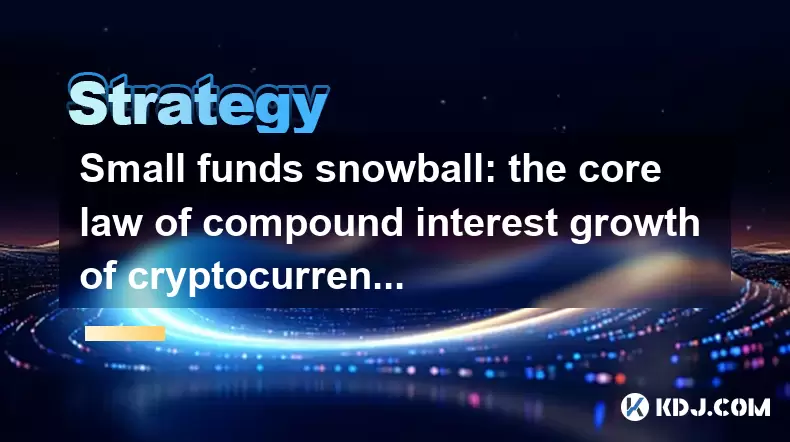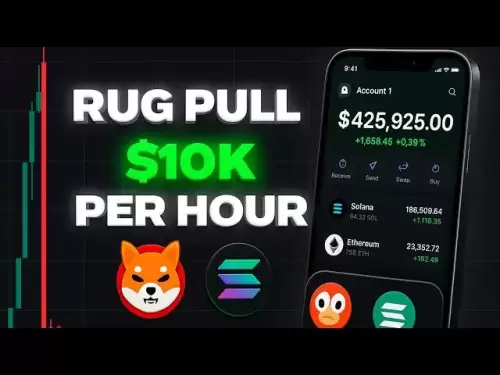-
 Bitcoin
Bitcoin $117700
-0.03% -
 Ethereum
Ethereum $3805
0.49% -
 XRP
XRP $3.098
-1.00% -
 Tether USDt
Tether USDt $1.000
0.03% -
 BNB
BNB $792.8
-1.72% -
 Solana
Solana $177.9
-1.95% -
 USDC
USDC $1.000
0.02% -
 Dogecoin
Dogecoin $0.2202
-1.55% -
 TRON
TRON $0.3278
-2.92% -
 Cardano
Cardano $0.7641
-2.43% -
 Hyperliquid
Hyperliquid $42.21
-2.68% -
 Sui
Sui $3.758
-1.58% -
 Stellar
Stellar $0.4080
-3.21% -
 Chainlink
Chainlink $17.75
-0.33% -
 Bitcoin Cash
Bitcoin Cash $591.8
4.96% -
 Hedera
Hedera $0.2561
-3.09% -
 Avalanche
Avalanche $23.34
-4.24% -
 Litecoin
Litecoin $110.7
1.96% -
 UNUS SED LEO
UNUS SED LEO $8.956
-0.01% -
 Toncoin
Toncoin $3.410
0.79% -
 Ethena USDe
Ethena USDe $1.001
0.03% -
 Shiba Inu
Shiba Inu $0.00001288
-1.82% -
 Uniswap
Uniswap $10.07
-2.06% -
 Polkadot
Polkadot $3.807
-2.27% -
 Monero
Monero $308.2
-2.15% -
 Dai
Dai $1.000
0.03% -
 Bitget Token
Bitget Token $4.521
-0.30% -
 Pepe
Pepe $0.00001134
-1.52% -
 Cronos
Cronos $0.1457
0.65% -
 Aave
Aave $274.9
-2.47%
Small funds snowball: the core law of compound interest growth of cryptocurrency
Compound interest in crypto can turn small investments into significant sums over time, but patience and consistent reinvestment are key to success.
Jun 08, 2025 at 01:35 pm

In the world of cryptocurrency, one of the most powerful tools at an investor's disposal is the concept of compound interest. Known as the small funds snowball, this method leverages the core law of compound interest to grow small initial investments into significant sums over time. The principle behind this strategy is simple yet effective: reinvesting the returns generated from an investment to produce even greater returns in the future. This article will delve into the mechanics of compound interest in the context of cryptocurrency, explore strategies for maximizing its benefits, and discuss the importance of patience and consistency in achieving long-term growth.
Understanding Compound Interest in Cryptocurrency
Compound interest is the process where the interest earned on an investment is added back to the principal amount, allowing the investor to earn interest on both the original investment and the accumulated interest. In the realm of cryptocurrency, this can be particularly powerful due to the potential for high returns, although it comes with increased volatility and risk.
To illustrate, if you invest $100 in a cryptocurrency that yields an annual return of 10%, after one year, you would have $110. If you reinvest that $110, the following year, you would earn 10% on $110, resulting in $121. This process continues, and over time, the growth accelerates as the base amount on which interest is calculated grows larger.
Strategies for Maximizing Compound Interest in Cryptocurrency
To effectively utilize compound interest in cryptocurrency, investors must adopt certain strategies. These include:
- Reinvesting Dividends and Rewards: Many cryptocurrencies offer staking rewards or dividends. By automatically reinvesting these rewards, you can accelerate the compounding effect.
- Dollar-Cost Averaging (DCA): Investing a fixed amount of money at regular intervals can help mitigate the risk of market volatility and ensure consistent growth through compounding.
- Choosing the Right Cryptocurrencies: Selecting cryptocurrencies with solid fundamentals and potential for growth can maximize the returns on which compounding occurs.
The Role of Patience and Consistency
Patience and consistency are crucial when employing the small funds snowball strategy. Cryptocurrency markets can be highly volatile, and it's essential to maintain a long-term perspective. Consistent investment over time, rather than trying to time the market, is more likely to yield positive results through compound interest.
For instance, if you invest $50 monthly in a cryptocurrency with an average annual return of 15%, after 10 years, your investment could grow significantly due to the compounding effect. This growth is not linear but exponential, emphasizing the importance of staying the course even during market downturns.
Practical Examples of Compound Interest in Cryptocurrency
Let's look at a practical example to understand how compound interest works in cryptocurrency. Suppose you invest $1,000 in a cryptocurrency that yields an average annual return of 12%. If you reinvest all returns, the growth over time would be as follows:
- Year 1: $1,000 1.12 = $1,120
- Year 2: $1,120 1.12 = $1,254.40
- Year 3: $1,254.40 * 1.12 = $1,404.93
As you can see, the investment grows more rapidly each year due to the compounding effect. This example assumes a fixed rate of return, but in reality, cryptocurrency returns can fluctuate significantly.
Risks and Considerations
While the potential for growth through compound interest in cryptocurrency is enticing, it's important to be aware of the risks. Cryptocurrency markets are highly volatile, and the value of your investment can decrease as well as increase. Additionally, not all cryptocurrencies offer staking or dividend opportunities, which can limit the ability to compound returns.
It's also crucial to consider the security of your investments. Storing cryptocurrencies in secure wallets and using reputable exchanges can help mitigate the risk of theft or loss.
Implementing the Small Funds Snowball Strategy
To implement the small funds snowball strategy effectively, follow these steps:
- Choose a Cryptocurrency: Research and select a cryptocurrency with good growth potential and, if possible, staking or dividend rewards.
- Set Up a Staking or Dividend Reinvestment Plan: Many platforms allow you to automatically reinvest your rewards, ensuring continuous compounding.
- Invest Consistently: Use dollar-cost averaging to invest a fixed amount at regular intervals, regardless of market conditions.
- Monitor and Adjust: Regularly review your investments and adjust your strategy as needed, but avoid making impulsive decisions based on short-term market fluctuations.
By following these steps, you can harness the power of compound interest to grow your small funds into a significant investment over time.
Frequently Asked Questions
Q: Can compound interest work with all cryptocurrencies?
A: Compound interest can work with any cryptocurrency, but it's most effective with those that offer staking or dividend rewards. Cryptocurrencies without these features may still benefit from compound interest through price appreciation, but the process is less straightforward.
Q: How often should I reinvest my rewards to maximize compound interest?
A: The more frequently you reinvest your rewards, the more effective the compounding will be. Many platforms offer daily or weekly compounding options, which can significantly enhance your returns over time.
Q: Is it necessary to reinvest all my rewards, or can I withdraw some?
A: While reinvesting all your rewards maximizes the compounding effect, you can withdraw some if needed. However, withdrawing rewards reduces the base amount on which future interest is calculated, potentially slowing down the growth of your investment.
Q: How can I calculate the potential growth of my investment with compound interest?
A: You can use the compound interest formula: A = P(1 + r/n)^(nt), where A is the future value of the investment, P is the principal amount, r is the annual interest rate, n is the number of times interest is compounded per year, and t is the number of years. Online compound interest calculators can also help you estimate potential growth.
Disclaimer:info@kdj.com
The information provided is not trading advice. kdj.com does not assume any responsibility for any investments made based on the information provided in this article. Cryptocurrencies are highly volatile and it is highly recommended that you invest with caution after thorough research!
If you believe that the content used on this website infringes your copyright, please contact us immediately (info@kdj.com) and we will delete it promptly.
- LYNO Token Presale: AI Arbitrage Revolution in DeFi
- 2025-07-31 05:11:11
- Pepecoin Successors: Can These Cryptocurrencies Make You a Millionaire?
- 2025-07-31 05:50:12
- AML Bitcoin Fraud: Cracking Down on Crypto Crime in the Big Apple and Beyond
- 2025-07-31 04:33:53
- Cardano (ADA) in 2025: Navigating Crypto's Future
- 2025-07-31 03:52:07
- Solana Meme Coin Price Prediction: Will the Frog Outleap the Dog?
- 2025-07-31 03:52:07
- Bitcoin's Bullish Outlook: CryptoQuant's Insights on Futures Market Cooling
- 2025-07-31 03:59:10
Related knowledge

How to avoid common crypto investment mistakes?
Jul 13,2025 at 01:35am
Understanding the Risks of Crypto InvestmentInvesting in cryptocurrency can be highly rewarding, but it also comes with significant risks. One of the ...

What is a long-short crypto strategy?
Jul 15,2025 at 10:56am
Understanding the Basics of a Long-Short Crypto StrategyA long-short crypto strategy is an investment approach where traders simultaneously take long ...

What is a long-short crypto strategy?
Jul 11,2025 at 01:28pm
Understanding the Basics of Long-Short Crypto StrategyA long-short crypto strategy is an investment approach where traders take both long and short po...

How to use the RSI indicator for crypto?
Jul 12,2025 at 03:56pm
Understanding the RSI Indicator in Cryptocurrency TradingThe Relative Strength Index (RSI) is a momentum oscillator used to measure the speed and chan...

Is copy trading a good strategy for crypto beginners?
Jul 12,2025 at 08:28am
Understanding Copy Trading in the Cryptocurrency MarketCopy trading is a strategy where novice traders replicate the trades of experienced investors a...

How to build a crypto portfolio with $1000?
Jul 13,2025 at 08:14pm
Understanding the Basics of Cryptocurrency InvestmentBuilding a crypto portfolio with $1000 starts with understanding the fundamentals of cryptocurren...

How to avoid common crypto investment mistakes?
Jul 13,2025 at 01:35am
Understanding the Risks of Crypto InvestmentInvesting in cryptocurrency can be highly rewarding, but it also comes with significant risks. One of the ...

What is a long-short crypto strategy?
Jul 15,2025 at 10:56am
Understanding the Basics of a Long-Short Crypto StrategyA long-short crypto strategy is an investment approach where traders simultaneously take long ...

What is a long-short crypto strategy?
Jul 11,2025 at 01:28pm
Understanding the Basics of Long-Short Crypto StrategyA long-short crypto strategy is an investment approach where traders take both long and short po...

How to use the RSI indicator for crypto?
Jul 12,2025 at 03:56pm
Understanding the RSI Indicator in Cryptocurrency TradingThe Relative Strength Index (RSI) is a momentum oscillator used to measure the speed and chan...

Is copy trading a good strategy for crypto beginners?
Jul 12,2025 at 08:28am
Understanding Copy Trading in the Cryptocurrency MarketCopy trading is a strategy where novice traders replicate the trades of experienced investors a...

How to build a crypto portfolio with $1000?
Jul 13,2025 at 08:14pm
Understanding the Basics of Cryptocurrency InvestmentBuilding a crypto portfolio with $1000 starts with understanding the fundamentals of cryptocurren...
See all articles

























































































